Welcome, future TEFL teachers! If you’ve been digging around online for advice about teaching English abroad, you’ve probably stumbled across blog posts written by travelers who taught abroad for a semester and now claim expert status. This isn’t one of those posts.
Imagine trading your daily commute for a morning walk past ancient ruins or along a pristine beach. This guide—written by a team that has spent two decades running ESL schools and training teachers across Latin America—offers the practical, boots-on-the-ground advice you can trust. Since 2003, Maximo Nivel has delivered Ministry-of-Education–accredited English programs in Costa Rica, Guatemala, and Peru. Every day, more than 3,000 learners walk through our doors, and another 1,000 join us online to study English using our in-house curriculum and textbooks.
Our team is 200-strong—about 60% local Costa Ricans, Guatemalans, and Peruvians, and 40% international teachers, academic advisors, field managers, and support staff. Additionally, we run intensive TEFL certification courses eleven months a year and have certified thousands of new teachers who now work around the world and online. As one of the most reviewed and highest-rated in-person TEFL providers on the planet, we’re confident we know our stuff.
In short, we don’t just talk about teaching English abroad—we live it. This guide distills two decades of experience into practical insights you can rely on: the job markets that actually hire, real-world salaries and living costs, visa realities, and the credentials that open doors. Let’s dive in!
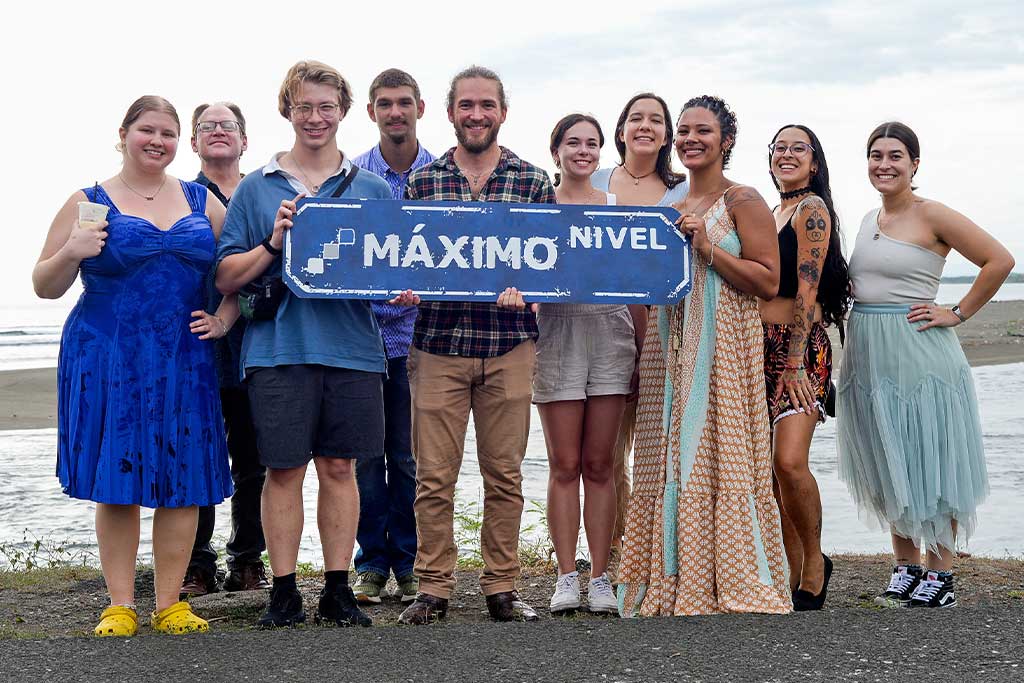
Unlocking Your Potential: Teaching Opportunities
The English-teaching scene in Central and South America is as varied as the region’s landscapes. Our 200-strong, multicultural team sees that diversity up close every day. Whether you’re a recent graduate, a mid-career professional, or a retiree looking for a fresh chapter, we can help you find your place at our institutes or at the many schools that welcome our TEFL graduates each month. For more than 20 years, we have guided educators from every background to secure their footing and future classrooms.
Private Language Institutes: Your Launchpad to Latin America
Most ESL careers in Latin America start at private language institutes. These schools hum from dawn until late evening, 12 months a year, with motivated adult learners—and, at times, teens and children—who fit English lessons around their school, university, or work schedules. Private institutes are plentiful across Costa Rica, Guatemala, and Peru, so teaching opportunities arise year-round. There’s never a shortage of students because people throughout Latin America recognize how essential English is to personal growth and better job prospects.
Joining an institute like ours means tapping into a robust support network of local and international staff, earning a stable income, working with a proven curriculum, and teaching every proficiency level.
- Upside: Joyful, highly motivated learners; flexible timetables; varied class profiles; and hiring cycles that almost never pause—ideal for freshly certified teachers.
- Reality Check: Expect a split schedule, with morning and evening classes as the norm. Teacher salaries in Latin America are modest and typically align with the local cost of living. The real dividends come from the experience itself—immersing yourself in a new culture and joining a community of like-minded educators.
Public Schools: Rewarding but Competitive
Public K–12 schools across Latin America usually hire locally, so foreign teachers land spots only under very specific circumstances. English is on the curriculum in Costa Rica, Guatemala, and Peru, but ministries typically require proven classroom experience, appropriate academic credentials, and official paperwork. When a foreign educator is brought on board, it is almost always for the long haul, as public school systems value continuity. If you want to make a direct impact on local communities and work with a wide cross-section of society, this path is for you.
- Upside:You will enjoy a stable schedule of Monday-to-Friday daytime hours and full local holidays. You’ll also experience the reward of shaping the futures of young learners who, in many cases, could not otherwise afford tuition at a private institute.
- Reality Check: Salaries typically trail those at private academies, classes can swell to 35–40 students, and resources are often stretched thin. The public-school bureaucracy runs at a pace very different from what many foreigners are accustomed to, so patience is essential. The degree-validation process alone can take months and may result in only partial recognition of your qualifications.
International Schools: The A-List, But High Bars to Clear
International schools—prestigious campuses delivering bilingual or fully English curricula aligned with U.S. or British standards—are often regarded as the gold-standard posts for TEFL teachers in Latin America. Located in affluent districts and serving diplomats, expat families, and the local elite, these schools offer rewarding career paths for educators who hold advanced credentials such as a state teaching license or a master’s degree.
- Upside: International schools pay the region’s highest salaries and frequently include generous benefit packages—housing stipends, private health insurance, and airfare reimbursement—as well as smaller class sizes, state-of-the-art resources, and extended school holidays.
- Reality Check: Hiring committees set a high bar, typically requiring an advanced degree, valid teaching license, and proven classroom experience. The hiring window is short, often just once per year, making it impossible to jump in mid-term. Competition is fierce, and openings are limited; schools shortlist only the most qualified candidates and favor those who can commit for the long haul.
Online Teaching and Digital Nomad Life
Teaching English online to Latin American students is booming, giving educators the freedom to live almost anywhere while still earning an income. Many teachers blend online lessons with on-site classes to boost their earnings, while others embrace a fully digital lifestyle. This path is ideal if you move frequently or live in smaller communities where brick-and-mortar teaching jobs are limited.
- Upside: Online teaching offers unmatched control over both schedule and location. Whether you’re dreaming of a surf town in Costa Rica or a quiet Andean village, reliable high-speed internet is all you need to set up your virtual classroom.
- Reality Check: Hourly rates online are generally lower than in traditional classrooms because of intense global competition. Securing enough booked hours can be a hustle, and spotty internet—common in beach towns and rural villages—can interrupt classes at the worst moments. Time-zone differences often mean very early or very late shifts, and many digital nomads find they miss both the buzz of face-to-face teaching and the daily camaraderie that comes with working alongside other English teachers.
For those seeking flexibility without volatility, Maximo Nivel’s online English program serves more than 1,000 learners every month and guarantees consistent teaching blocks. You can log in from anywhere with a solid internet connection, tap into a built-in community of fellow online teachers, and even top up your income with private tutoring if you wish. It’s a balanced way to keep your travel plans open while still enjoying reliable pay, academic support, and peer camaraderie.
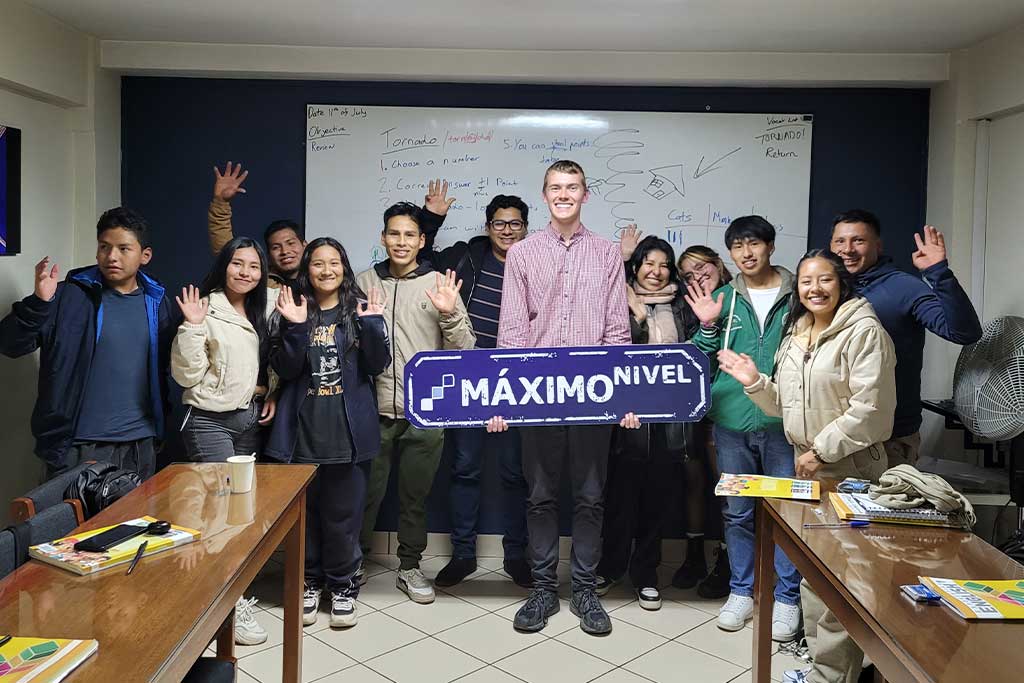
The Good, the Bad, and the Beautiful: Life as an English Teacher in Latin America
Teaching in Central and South America is a profoundly rich cultural experience, but let’s be real—it also comes with its share of challenges. As your seasoned guides and a team of long-term expats who’ve already navigated the culture shock, we want to give you the full picture: the adjustments you’ll make, the lifestyle you can expect, and the regional quirks you’ll come to love.
The Glorious “Pros”
Immersive Cultural Experience: Latin America is famous for its warmth, family-centered values, and open-armed hospitality. You won’t just visit—you’ll live it. Think spontaneous salsa nights, community fiestas, and endless invitations to share food and stories. Every day feels like a cultural masterclass.
Low Cost of Living & Comfortable Lifestyle: Salaries are modest, but once you embrace local shopping and dining habits, your money stretches much further than you’d expect. With a bit of savvy, you can live surprisingly well on a teacher’s income.
Travel and Natural Beauty Galore: Spend weekends exploring Peru’s Sacred Valley, hiking active volcanoes in Guatemala, or unwinding on Costa Rica’s jaw-dropping beaches. Affordable buses and regional flights make cross-border trips easy and accessible.
Opportunities for All Ages and Backgrounds: Latin America warmly welcomes mature professionals and teachers without university degrees (though a quality TEFL certificate is still essential). Private English institutes genuinely value life experience, and seasoned teachers are often highly respected.
Improved Spanish & Personal Growth: Daily immersion accelerates your Spanish, and Maximo Nivel sweetens the deal with discounted classes led by certified local instructors. You’ll return home with sharper language skills, cross-cultural savvy, and the confidence that comes from thriving outside your comfort zone.
The Realities: “Cons” to Consider
Limited Savings Potential: Let’s be upfront—teaching English in Latin America is about lifestyle, not fat paychecks. Newly certified teachers typically earn US $550–$800 per month, which covers rent, food, and weekend trips but won’t build hefty savings or quickly pay off large debts like student loans. The real payoff comes through cultural immersion, regional travel, and the kind of life-changing experiences no bank balance can match.
Infrastructure & Bureaucracy: Outside the most developed urban areas, you might encounter spotty public transportation, occasional power or water outages, and sluggish internet. Government paperwork—visas, residency cards, apostilles—can move at a snail’s pace. Patience and a sense of humor are essential. We’ve learned to treat extra stamps and long lines as part of the adventure.
Culture Shock & Classroom Dynamics: “Latin time” is real—punctuality norms, noise levels, and student participation styles differ from what many foreigners expect. Beginners without Spanish skills may initially feel adrift. Expect lively classrooms that demand firm but friendly management. The solution? Keep an open mind, laugh often, and lean on support from fellow teachers and local staff. Machismo culture can also surface in certain interactions, so understanding local gender norms and modeling respectful behavior in the classroom go a long way.
Despite these hurdles, most educators find that the warmth of the people, the relaxed pace, and the genuinely meaningful experiences far outweigh any inconveniences. Countless teachers have succeeded here before you, and with an open mind and a spirit of adventure, you can too. Living and working overseas stretches you in the best possible ways, broadening your perspective and accelerating personal growth.
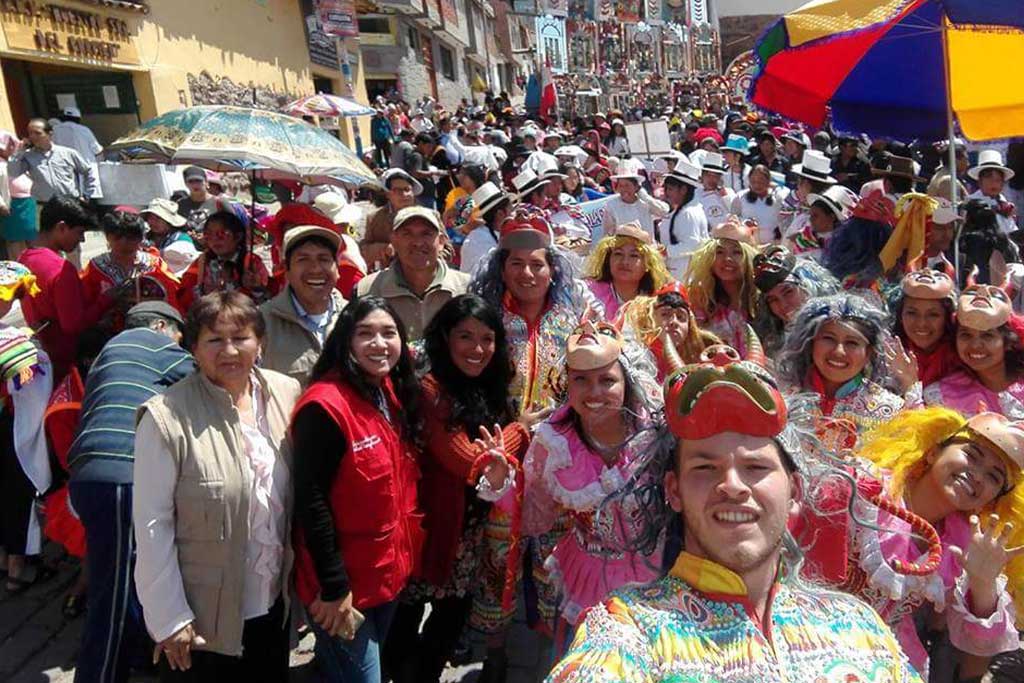
Show Me the Money! Average Salaries and Cost of Living
Financially, teaching in Central and South America won’t make you rich. Most educators focus on covering their costs while immersing themselves in the local lifestyle. For context, many middle-class families in Costa Rica, Guatemala, and Peru live comfortably on approximately US $800–1,200 per month—enough to cover rent, utilities, and school fees for an entire household. As a single traveler without debt, a teacher’s income can stretch just as far once you adopt local spending habits. The figures below show monthly averages for ESL teachers maintaining a basic yet comfortable standard of living.
Costa Rica: “Pura Vida” and a Slightly Higher Price Tag
Costa Rica offers competitive wages by regional standards. Entry-level TEFL roles pay US $650–900 per month, while top bilingual or international schools in the Central Valley can reach US $1,500 or more.
Costa Rica is often referred to as one of the priciest countries in Latin America—but only if you shop like a tourist. In San Pedro (San José’s university district), you can still find a furnished studio for about US $300. Watch out for “gringo prices” (foreigner pricing): advertisements in English or on expat forums often start 20–30% higher. Have a trusted Tico friend—or one of our Spanish-speaking staff members—place the first call, and you’ll usually hear a friendlier figure. Student-focused Facebook groups regularly post bargains; share a flat, and your personal rent can dip to US $150–250.
Prefer a suburban vibe? In upscale Santa Ana or Escazú—popular with expats—you’ll find modern one-bedroom apartments in the US $500–900 range, and rooms in shared houses from US $300–400. Prices reflect added amenities (gyms, pools, 24-hour security) and proximity to international restaurants and supermarkets, but watch out for “expat pricing” creeping in.
Craving ocean air? Head to Quepos/Manuel Antonio, where beach-town life comes with Tico-friendly rents: rooms start around US $250–350 and small studios at US $400–500. You’ll trade some city conveniences for surf breaks and sunset hikes.
Transport and food remain reasonable. City buses rarely top US $1. A hearty ‘casado’ at a neighborhood soda runs US $5–8. Stock up at the weekly ‘ferias’ for produce that’s cheaper—and fresher—than at supermarkets, then cook staples like rice and beans at home to stretch your ‘colones’.
You won’t build huge savings here, but with a local mindset, most teachers comfortably cover rent, food, and weekend getaways—and leave Costa Rica richer in “pura vida” memories.
Guatemala: Affordable Charm and Cultural Riches
Guatemala’s TEFL market is modest; private language institutes generally pay US $500–750 per month, while well-qualified teachers at international schools or universities in Guatemala City can earn US $1,000–1,500.
Living costs, however, are refreshingly low. Even in postcard-perfect Antigua—our home base—you can secure a room in a shared house for US $150–250 or a private studio for US $300–400. Watch out for tourist pricing: ads in English or on expat websites often carry a tourist surcharge. Have a trusted Guatemalan friend—or one of our Spanish-speaking staff members—make the first inquiry in Spanish, and you’ll usually hear the local price. Local Facebook groups and Marketplace regularly post bargains; with a bit of networking, rents can drop even further.
If you’d rather be in the capital, check out hip Zona 4 in Guatemala City. Think converted warehouses, co-working spaces, and street-art-lined cafés. Rents rise here—budget US $500–600 for a private one-bedroom apartment. As in Antigua, English-language ads often include a tourist premium; let a Guatemalan friend negotiate in Spanish, and you can easily trim 15–20% off. The payoff is walkable ‘Transmetro’ access, international dining, galleries, and nightlife—all at prices still well below those in North American or European capitals.
Everyday expenses are delightfully low. A set-menu ‘almuerzo’ runs US $5–8, and a ride on a colorful “chicken bus” within town costs around US $0.25–0.35. Shop at bustling municipal markets for produce at half the supermarket price, then cook at home to stretch your ‘quetzales’.
Live like a local, and a monthly budget of US $500–700 comfortably covers rent, food, transport, and weekend trips to Lake Atitlán or Semuc Champey. You won’t pad a retirement account here, but the cultural immersion, friendly community, and laid-back pace make Guatemala a rewarding place to teach and live.
Peru: Ancient Wonders and Budget-Friendly Living
English teachers at private language schools in Peru typically earn between US $500–750 monthly, which comfortably covers living expenses. Positions at bilingual schools or universities may offer salaries between US $800–1,000, but these often require advanced credentials.
Peru’s cost of living is truly affordable. In Cusco—even in the hip, bohemian neighborhood of San Blas—you can find a room in a shared apartment for US $150–200, while a private one-bedroom runs US $300–400.
Prefer the capital? Lima commands higher rents: expect US $500–700 for a furnished studio in Miraflores or Barranco, or US $300–400 for a room in a shared flat. Head south to colonial Arequipa, and prices ease again—studios often list for US $350–550, and rooms in shared apartments for US $200–250.
Listings in English often come with built-in “foreigner pricing.” Have a Peruvian friend make the first inquiry in Spanish, and you’ll usually unlock the local price.
Daily living expenses are extremely manageable. A local set-menu lunch typically costs between US $2–4, and local bus fares are usually less than US $0.50. Eating frequently at inexpensive local eateries is also highly affordable. A single person can comfortably live on a monthly budget of around US $500–700 by adopting a local lifestyle. Although significant savings may be limited, the unmatched cultural experiences and easy access to sites like Machu Picchu provide rich, intangible benefits.
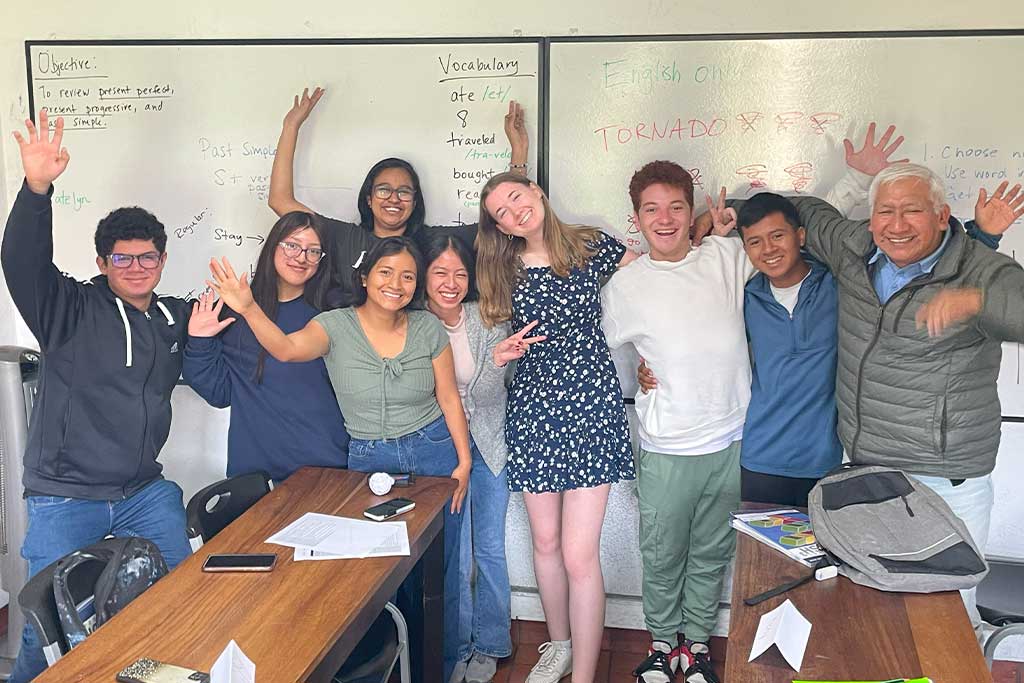
Navigating Paperwork: Visa and Work Permit Requirements
Navigating work visas in Latin America is a classic chicken-and-egg puzzle: you need a job offer to apply for the visa, yet—on paper—you need the visa to work. In Costa Rica, Guatemala, and Peru, you must already be in-country and hired before immigration will even accept your paperwork. A signed agreement is the golden ticket that lets you begin; without it, officials simply won’t open your file.
What follows is a bureaucratic relay race: fresh passport photos, fingerprints, sworn statements, apostilled diplomas, multiple trips to various ministries, and the inevitable “come-back-tomorrow” stamp hunt. Because every signature, translator, and notary charges a fee, trying to assemble this dossier from abroad usually costs twice as much and takes far longer than doing it locally.
Most new teachers, therefore, arrive on a tourist stamp, begin teaching, and convert to work residency with their employer’s help once they’re in-country.
Add to that the sea of misinformation online: Reddit threads, Facebook groups, Quora answers—and even AI models trained on that noise—regularly misstate how the system works. When you see blanket claims like “schools hire teachers illegally,” understand they’re missing the local requirement that you must already have a signed agreement to start any visa application.
Public schools raise the bar even further: they typically require permanent residency, a status granted only after multiple consecutive years on a temporary work permit. Some private international or IB schools will sponsor exceptional candidates (think advanced degrees and niche expertise), but for most newcomers, the realistic entry point is private language institutes. They hire year-round, guide you through the paperwork once you’ve proved yourself, and keep you legal for as long as you choose to stay.
Converting a tourist stamp into a legal work residency isn’t something you can do on your own; you need a signed agreement with a registered, tax-compliant employer—one that already has a track record of hiring foreign teachers and can justify to immigration why you are needed. For teachers ready to make that commitment, Maximo Nivel meets every one of those requirements. As a fully registered employer in Costa Rica, Guatemala, and Peru, we handle the heavy lifting: our in-country legal teams assemble the paperwork, shuttle files between ministries, and even present documents on your behalf. The process is still lengthy (think months, not weeks), and you’ll be responsible for gathering your personal records and paying government fees, but you’ll have step-by-step guidance—and the reassurance of knowing many teachers have successfully walked the same path.
How to Get Your Work Visa to Teach in Costa Rica
In Costa Rica, you cannot apply for a work residency permit until you are physically in-country and already hired, so the process can only start after you accept your teaching agreement. At Maximo Nivel, once you choose to apply for your work visa, we immediately issue the two sponsorship letters immigration requires—a formal job-offer letter and a corporate guarantee letter—while you gather your personal documents: an apostilled background check that’s less than six months old, an apostilled birth certificate, passport copies, two passport photos, and your TEFL or university certificates. We will also schedule your fingerprint appointment at the Public Security Ministry, provide payment slips for the mandatory ‘hoja de delincuencia’ (criminal background check), and organize certified translations of every English document into Spanish.
With those pieces in hand, our legal liaison submits the complete ‘Permiso de Trabajo / Residencia Temporal’ packet to immigration. You accompany us only long enough to sign a few forms and receive an ‘expediente’ number; this receipt places your file ‘en trámite’ (in process) and authorizes you to continue teaching for Maximo Nivel throughout the several-month review period. If your initial 90-day tourist stamp lapses before approval, you simply renew it at the border—the active ‘expediente’ “freezes” your status. You may not switch employers while the permit is pending, because the in-process authorization is tied to the specific agreement and organization. If you walk away mid-process and accept another job, immigration cancels your ‘expediente’, you revert to tourist status, and you must restart (and repay) the entire application with the new employer.
Once approval comes through, you pay the issuance fees (approximately US $200), enroll in the national healthcare system (CCSS), sit for a photo, and pick up your DIMEX residency card two to three weeks later. Counting apostilles, translations, government stamps, and the DIMEX fee, teachers typically spend US $400–500 out of pocket; Maximo Nivel covers its own corporate paperwork and all in-country courier runs. With a registered sponsor that has guided hundreds of teachers through the system, the Costa Rican visa maze becomes a predictable checklist rather than an ordeal.
How to Get Your Work Visa to Teach in Guatemala
In Guatemala, you can begin the residency process only after you arrive in the country and sign a teaching agreement with a registered school. At Maximo Nivel in Antigua, once you decide to apply for your work visa and your agreement is in place, our legal team prepares two sponsor letters (‘oferta de empleo’ and ‘carta de responsabilidad’) and provides you with a checklist of personal documents: an apostilled federal-level background check (dated within the past six months), an apostilled birth certificate, full passport scans, two passport-sized photos, your TEFL or university certificates, and a ‘certificación de movimiento migratorio’ (immigration movement record) confirming your recent entry and exit dates. We accompany you to the ‘Policía Nacional Civil’ in Guatemala City for fingerprints and to the Banco de Guatemala to pay the filing fee, then submit the complete residency and work permit dossier to the Instituto Guatemalteco de Migración and the Ministerio de Trabajo.
Once the packet is stamped as ‘en trámite‘, you receive an ‘expediente; number. This receipt functions as temporary authorization to continue teaching exclusively for Maximo Nivel while the application is reviewed (typically six to nine months). Your tourist status is effectively frozen, but you cannot change employers during this period—doing so cancels your ‘expediente;, returns you to tourist status, and forces you to restart (and repay) the entire process with a new sponsor. Once approval arrives, you pay approximately US $250–350 in final issuance fees, submit a local medical certificate, have your photo taken, and collect your five-year ‘Residente Temporal – Trabajador’ ID card. With our local team shepherding every step—translations, notarizations, and ministry runs—the Guatemalan visa maze shrinks into a clear checklist. Your total out-of-pocket cost is usually around US $400, and you remain legally employed throughout the wait.
How to Get Your Work Visa to Teach in Peru
In Peru, the pathway to a Carné de Extranjería begins only after you arrive on a tourist stamp and sign a teaching agreement. At Maximo Nivel in Cusco, once you decide to apply for your work visa, our legal team immediately issues the sponsor letters required by Migraciones and guides you in gathering your personal documents, plus certified Spanish translations.
Next comes an in-country immigration appointment (fingerprints, photos, and a small fee) and a S/162.50 filing payment at Banco de la Nación. We upload the complete “Cambio de Calidad Migratoria—Trabajador” application to the Migraciones digital portal. Once it’s accepted, you receive a constancia de trámite and can request the inexpensive Permiso Especial para Trabajar (PET), which lets you keep teaching exclusively for the sponsoring organization while your file is under review—usually three to five months. Because that in-process permit is tied to our sponsorship, switching employers mid-stream voids your expediente, forcing you to restart (and repay) the process with your new school, returning you to tourist status in the meantime.
When approval arrives, you pay the S/49.90 card-issuance fee, register with SUNAT for tax purposes, and collect your Carné de Extranjería. Total personal outlay—including apostilles, translations, immigration office fees, application, PET, and card—is typically under US $400. Maximo Nivel handles all corporate paperwork, ministry runs, and online uploads.
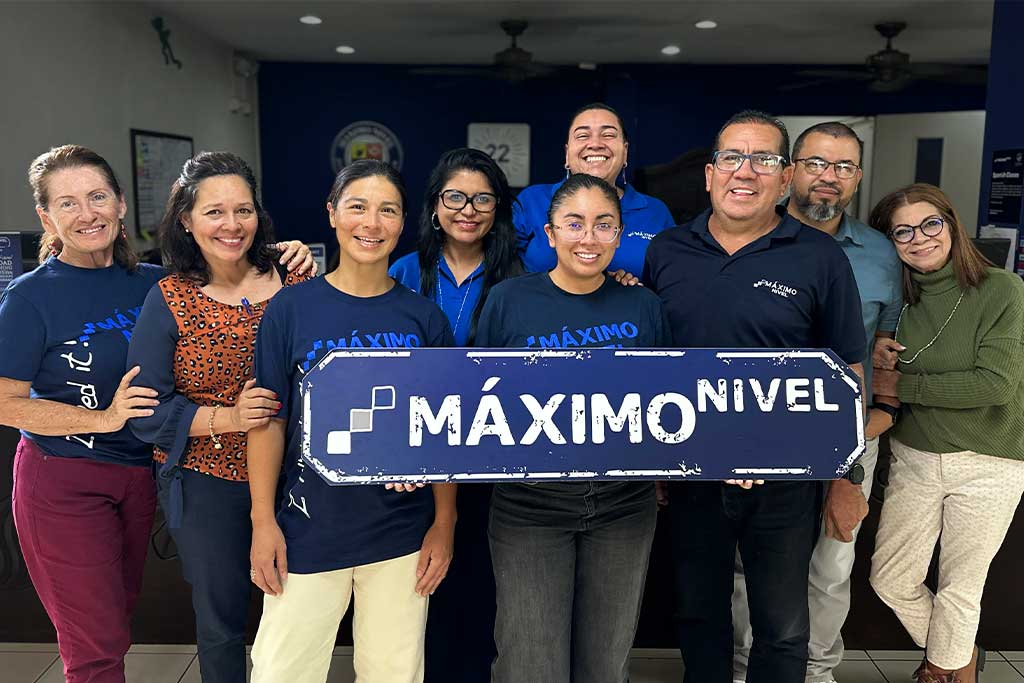
Gearing Up for Success: Recommended Qualifications and TEFL Certification
To maximize your chances of landing a fantastic teaching job in Central or South America, you’ll need the right qualifications. While some informal positions might not require every credential, having them will significantly boost your prospects and overall experience.
TEFL/TESOL Certification (150 hours with Practical Teaching) – Your Non-Negotiable!
Since 2003, Maximo Nivel has certified, hired, and mentored thousands of teachers, giving us a clear view of what schools genuinely want. Today, any reputable institute—let alone a bilingual or international school—expects a 150-hour TEFL/TESOL certificate that includes live, observed practicum. Anything less almost guarantees your résumé lands in the “maybe later” pile.
You may still see blogs, Reddit threads, or even a few placement agencies insisting that a 120-hour certificate is “more than enough.” That figure used to meet the minimum in many countries, but if you don’t already have teaching experience, the bar has moved. When two candidates sit side-by-side, and only one has the extra 30 hours of training plus documented classroom practice, hiring managers consistently choose the teacher with deeper preparation. The additional hours matter because they cover lesson planning, classroom management, grammar diagnostics, and—crucially—6–10 hours of supervised teaching practice. Employers need proof you can run a class, not just talk about methodology.
Maximo Nivel’s own 150-hour program was built to exceed those expectations. Our syllabus is fully accredited and reviewed annually by local education authorities, and courses run year-round in Costa Rica, Guatemala, Peru, and online. Practicum takes place in our own ESL classrooms, so you graduate having already taught the same learner profiles you’ll meet later. Graduates also receive lifetime job-placement support; schools across Latin America routinely request our alumni because they trust the training behind the certificate. Add thousands of five-star reviews and former trainees teaching on all over the world, and hiring committees immediately recognize your credentials as solid. In short, a rigorous 150-hour certificate is now your ticket to better jobs, and Maximo Nivel’s program delivers that standard—backed by two decades of proven results.
Avoid like the plague the ultra-cheap, “Groupon”-style TEFL certificates promising credentials for the price of a dinner out. No serious school takes these seriously; directors recognize each bargain provider by name and routinely delete applications listing those certificates. Worse, the bare-bones coursework leaves you underprepared for real classrooms—so even if you slip through an interview, your first day in front of students can be a rude awakening. Don’t cut that corner: you won’t fool anyone but yourself, while well-trained teachers with full 150-hour credentials sweep up the jobs—and succeed in them—that you wanted.
Degrees and Other Requirements: What You Really Need
One of the biggest draws of Costa Rica, Guatemala, Peru, and much of Latin America is that you can teach without a university degree. A four-year diploma certainly opens extra doors—think well-funded bilingual schools or university posts—but it’s not a legal prerequisite for the vast majority of language institute positions. What hiring managers truly insist on is a reputable 150-hour TEFL certificate with live practicum and a native (or near-native) command of English. Arrive with these two assets and an upbeat, adaptable attitude, and you’re already ahead of most applicants.
Spanish fluency, while a huge plus for everyday life and beginner classrooms, isn’t required for the hiring process. Schools conduct interviews in English, and Maximo Nivel’s staff provide plenty of language support once you’re on the ground. For top-tier international schools, the bar rises: a state teaching license and often a related Bachelor’s or even Master’s degree are expected. Yet those roles represent a small slice of the market. For most TEFL jobs across the region, a solid certificate, energy, and professionalism are the credentials that count. Any additional qualifications—business background, specialized exam training, experience with young learners—simply stack the deck further in your favor.
In short, Latin America rewards teachers who are trained, flexible, and genuinely eager to engage with local culture. Equip yourself with a rigorous TEFL certification, pack a willingness to learn on the fly, and you’ll navigate the job market smoothly. With the right preparation and the practical insights laid out in this guide, your teaching adventure in Central and South America won’t just be possible—it will be unforgettable.
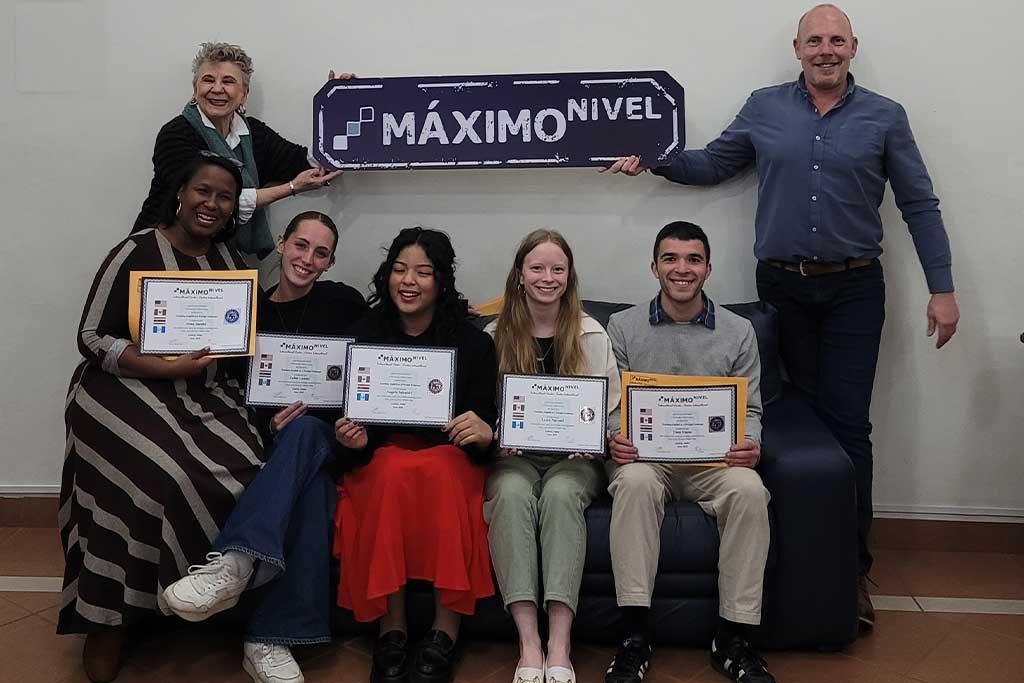
Your Teaching Journey Starts Now
Central and South America offer more than a teaching post—they deliver a season of discovery that reshapes who you are and how you see the world. In the classrooms of Costa Rica, Guatemala, and Peru, you’ll sharpen professional skills, practice Spanish in real conversations, and share “aha” moments that light up students’ faces. Beyond school walls, weekends carry you from cloud-forest zip lines to Incan ruins and colonial plazas, trading a fat savings account for memories no spreadsheet can measure.
Now you’ve got the roadmap in hand—what credentials matter, where the real jobs are, how visas and budgets work—and you didn’t pick it up from a random forum post. You heard it straight from a team that has spent two decades running ESL institutes in three countries, training thousands of new teachers, and teaching English to 4,000 students every day. Take this insider knowledge, pack a curious spirit, and dive into a region that rewards flexibility, initiative, and plenty of heart.
Your adventure starts now. We’re here to help you get started, and our team is ready to cheer you on and welcome you to your new classroom.
¡Buen viaje y mucha suerte!—safe travels and all the best as you launch your adventure teaching English in Latin America.
